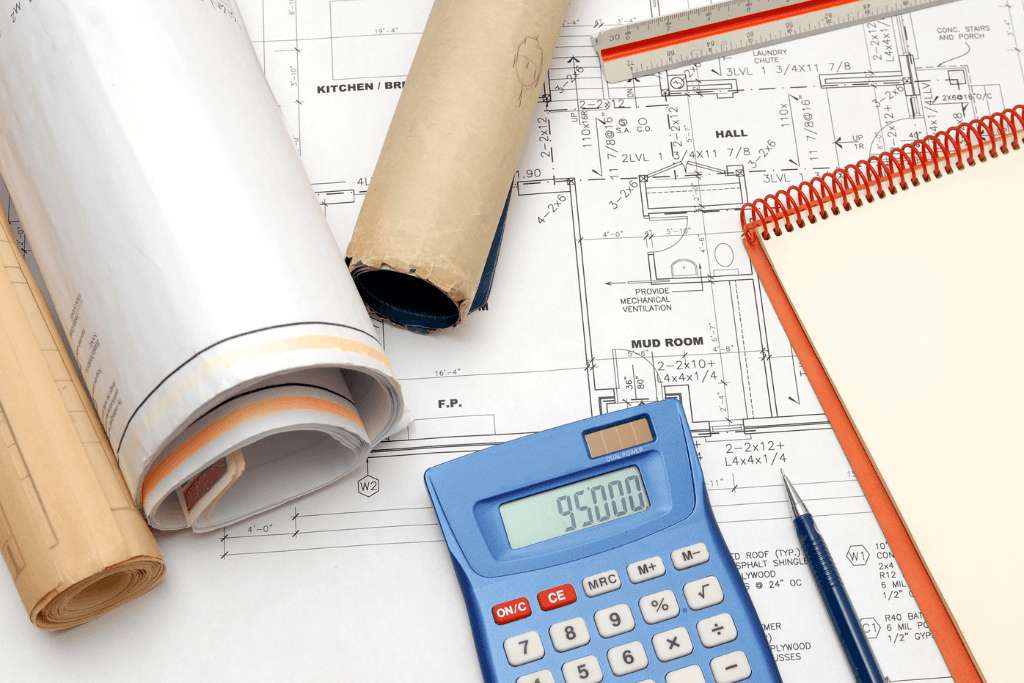Home renovation projects can be exciting and daunting at the same time. You get to upgrade your living space and make it more functional and beautiful, but you also have to deal with the mess, noise, and disruptions that come with construction work. However, one thing that you absolutely cannot afford to overlook is budgeting.
One of the most significant concerns when renovating a home is staying on budget. Budget overruns are common in home renovation projects but can be avoided with careful planning and execution.
I know, I know, budgeting sounds like a drag. It’s like going to the dentist or doing your taxes. But trust me, it’s way better than the alternative. If you don’t set a budget for your renovation project, you might end up with a half-finished kitchen, a bathroom without a toilet, or a bedroom that looks like it got hit by a tornado. And let’s not forget the financial nightmare that can ensue if you overspend on your renovation and end up with a maxed-out credit card or a second mortgage.
So, let’s talk about why budgeting is so important. First of all, a budget helps you stay realistic and grounded. You might have big dreams and Pinterest boards full of inspiration, but you need to make sure that your renovation plans are feasible and affordable. A budget forces you to think about the costs of materials, labor, permits, and other expenses, and to prioritize your needs over your wants. It also helps you avoid impulse purchases and expensive mistakes that can blow your budget out of the water.
Secondly, a budget gives you peace of mind. Renovation projects can be unpredictable, and there are always surprises lurking behind the walls and under the floors. A budget that includes a contingency fund can help you prepare for the unexpected and avoid panic attacks when you discover a leaky pipe or a termite infestation. Plus, if you have a realistic budget, you can avoid the stress and anxiety of wondering how you’re going to pay for everything.
Finally, a budget helps you communicate with your contractor. If you have a clear budget from the beginning, you can work with your contractor to find ways to save money without compromising on quality or safety. You can also avoid misunderstandings and conflicts that can arise when the contractor thinks you have unlimited funds and you think the contractor is ripping you off.
So, there you have it. Budgeting might not be the most thrilling part of your renovation project, but it’s definitely one of the most important. Home renovation can be an exciting project, but it can quickly become overwhelming if you don’t have a proper plan.
Take the time to set a realistic budget, stick to it, and enjoy your newly renovated home without worrying about how you’re going to pay for it.
8 Ways to Stick To Your Home Renovation Budget
This blog post is packed with actionable tips and strategies that will help you keep your renovation project on budget. We’ll start by showing you how to set a realistic budget based on your finances and the costs of materials and labor.
We’ll also explain how to prioritize your needs over your wants, how to find a reputable contractor, and how to communicate your budget to your contractor. We’ll even give you tips on how to monitor the progress of the project and address any issues that arise to make sure the project stays on track and within budget.
By the end of this post, you’ll have a solid understanding of how to budget for a renovation project and the tools you need to keep your spending under control.
Let’s get started…
1. Set a Realistic Budget
Alrighty, let’s talk about setting a realistic budget for your renovation project. This is where the rubber meets the road, folks. You can’t just wing it and hope for the best. First things first, you need to assess your finances and figure out how much money you can actually afford to spend without living on ramen noodles for the next decade. Don’t be afraid to be honest with yourself – if your bank account is looking a little sad these days, it’s better to know now than to realize it halfway through the project.
Once you know how much you can spend, it’s time to research the costs of materials, labor, permits, and any other expenses that might come up. This is where you’ll need to do your homework and get a little nerdy with the spreadsheets. There are plenty of online resources and calculators that can help you estimate costs, but you might also want to talk to a contractor or other professionals to get more accurate numbers.
Now, here’s the thing: even if you’re the most organized, detail-oriented person on the planet, there will always be unexpected expenses that pop up during a renovation project. That’s just the nature of the beast. So, it’s important to add a contingency fund to your budget – a little buffer zone to cover any surprises that might come up. How much should you set aside for contingencies? Experts say that 10-20% of your total budget is a good rule of thumb.
So, to sum it up: set a realistic budget by assessing your finances, researching costs, and adding a contingency fund. It might not be the most exciting part of the renovation process, but it’s essential if you want to avoid a financial meltdown.
2. Get Accurate Construction Estimates
You can get an estimate from a contractor or use construction estimating software. If you decide to go with a contractor, get at least three different estimates from different contractors. This will help you compare prices and choose the one that fits your budget. When getting a construction estimate, make sure that the contractors include all the costs associated with the project.

If you decide to use construction estimating software, make sure that you choose a reliable one. Many software options are available, and some are more accurate than others. The software will give you a rough idea of the project’s cost, but it’s important to remember that unforeseen circumstances can arise during the renovation.
3. Prioritize Your Renovation Goals
Prioritizing your goals will help you stay on budget by ensuring that you spend your money on the most critical parts of your home first. When prioritizing your goals, consider functionality, safety, and aesthetics. For example, if your roof leaks, fixing it before renovating your kitchen is essential. Prioritizing your goals will help you stay focused and prevent you from overspending on non-essential renovations.
4. Hire a Reputable Contractor
One of the most important decisions you’ll make during your renovation project is which contractor to hire. This is not the time to choose someone based solely on their Yelp reviews or their cute logo. You want to find a contractor with a good reputation, solid experience, and the skills to get the job done right.
First things first: do your research. Ask your friends, family, and neighbors for recommendations. Look for contractors online and check out their websites, social media, and customer reviews. And don’t forget to ask for references – any reputable contractor should be able to provide you with a list of satisfied customers.
Once you’ve narrowed down your list, it’s time to get multiple quotes and compare prices. This is not the time to be shy – ask for a detailed breakdown of costs, materials, and timelines. And don’t forget to ask questions! If a quote seems too good to be true, it probably is. Make sure you understand exactly what you’re paying for and what’s included in the contract.
And speaking of contracts, make sure you choose a contractor who is licensed and insured. This is non-negotiable. A licensed contractor has passed exams and met certain standards, and insurance protects you and your home in case of accidents or damages. Don’t be afraid to ask for proof of licensure and insurance – any reputable contractor will be happy to provide it.
So, to sum it up: do your research, get multiple quotes, and choose a licensed and insured contractor with a good reputation. It might take a little extra time and effort, but it’s worth it to avoid headaches and heartaches down the road.
5. Keep Track of Your Expenses
It’s easy to overspend on a renovation project without keeping track of your expenses. One way to keep track of your expenses is by using a spreadsheet. In the spreadsheet, you can list all the expenses associated with the project and update it regularly. This will help you stay organized and ensure you’re spending on all areas.

So, how do you keep track of your expenses? One of the easiest ways is by using a spreadsheet. If you’re not a spreadsheet whiz, don’t worry – you don’t need to be. Just create a simple document with columns for the date, expense category (e.g. materials, labor, permits), vendor or supplier, description, and amount. Update it regularly as you make purchases or receive invoices.
By keeping track of your expenses, you can see exactly where your money is going and identify any areas where you might be overspending. You can also adjust your budget as needed and make informed decisions about where to cut back or splurge. And when tax time comes around, you’ll be grateful for the organized records.
So, don’t let the thought of tracking expenses intimidate you. Just set up a simple spreadsheet and update it regularly. It might not be the most glamorous part of the renovation process, but it’s a crucial step in keeping your budget under control.
6. Be Open to Alternative Options
Being open to alternative options can help you stay on budget while still achieving the desired look for your home. Communicating with your contractor or designer about any budget constraints is also essential. They can suggest alternative options that you still need to consider.
When considering alternative options for your home renovation project, think about all of the elements that go into the project and look for alternatives that can keep the project within budget.
For example, if you’re tackling a full kitchen renovation, it’s worth looking into kitchen estimating software to help you stay on budget. This software can provide accurate estimates for your kitchen renovation, allowing you to plan your budget more effectively.
7. Consider DIY Options
One way to save money on your home renovation project is by considering DIY options. Doing some of the work yourself can save you money on labor costs. However, it’s important to only take on tasks you’re confident you can complete successfully.
This means you have to be realistic about your skills and abilities. If you have no experience with power tools or construction work, it might not be the best idea to start tearing down walls or rewiring your home’s electrical system. However, there are plenty of DIY tasks that are less intimidating and can still save you money. Painting walls, installing shelves, laying flooring, and even tiling a backsplash are all tasks that can be done by a novice DIYer with the right tools and instructions.

For example, almost every construction project comes with a waste removal fee, which is basically the cost to get rid of what was demolished and the leftover bits and pieces from the new installation.
Often, this cost is much higher than it would be to simply contact a local dumpster rental and have that placed in your driveway during the renovation project. Plus, as a bonus, you can do a solid decluttering and put it in the same bin.
You get all of the construction waste dealt with and can do a major spring cleaning, all for less than the disposable fee that would be charged by your contractor (in most cases).
Another benefit of DIY work is that it can give you a sense of satisfaction and pride in your home. There’s something deeply satisfying about looking at a project and saying, “I did that.” And even if you don’t consider yourself a handy person, you might surprise yourself with what you can accomplish.
That being said, it’s important to weigh the pros and cons of DIY work before diving in. If you’re not confident in your abilities or don’t have the time and energy to take on a DIY task, it might be better to hire a professional. DIY work that is done poorly can end up costing you more money in the long run, as you might need to hire a professional to fix the mistakes.
So, to sum it up: consider DIY options to save money on labor costs, but be realistic about your abilities and don’t take on tasks that are beyond your skill level. With a little research, practice, and patience, you might surprise yourself with what you can accomplish.
8. Build in a Contingency Fund
Even with careful planning, unexpected costs can arise during a home renovation project. It’s essential to build a contingency fund to cover any unforeseen expenses. A good rule of thumb is to set aside at least 10% of your budget for unexpected costs.
Having a contingency fund will give you peace of mind and prevent you from overspending on your renovation project. It’s important to remember that unexpected expenses can arise, so it’s better to be prepared than to be caught off guard.
The Bottom Line on Home Renovation Project Budgets
Staying on budget during a home renovation requires careful planning, prioritizing goals, tracking expenses, and considering alternative options. Construction estimating software can provide accurate estimates and help you stay on track with your budget. With these tips and tools, you can achieve a successful renovation project within your budget.

Staying on a budget doesn’t mean sacrificing quality. With careful planning and execution, you can achieve your desired renovation goals while staying within your budget. So, take the time to plan your renovation project, get accurate estimates, and keep track of your expenses to ensure a successful and budget-friendly renovation.

